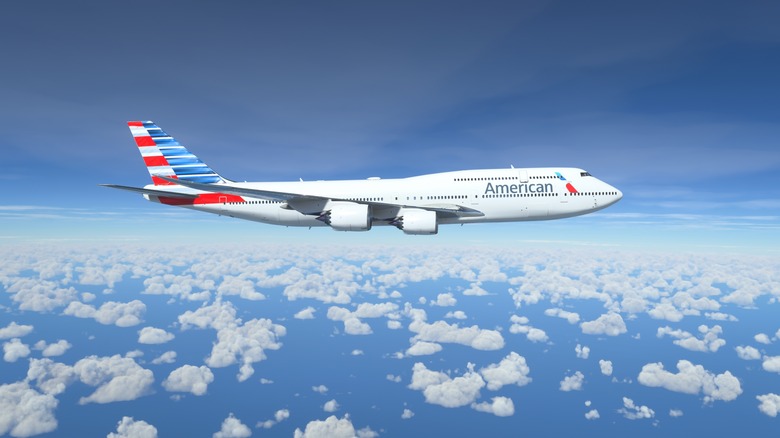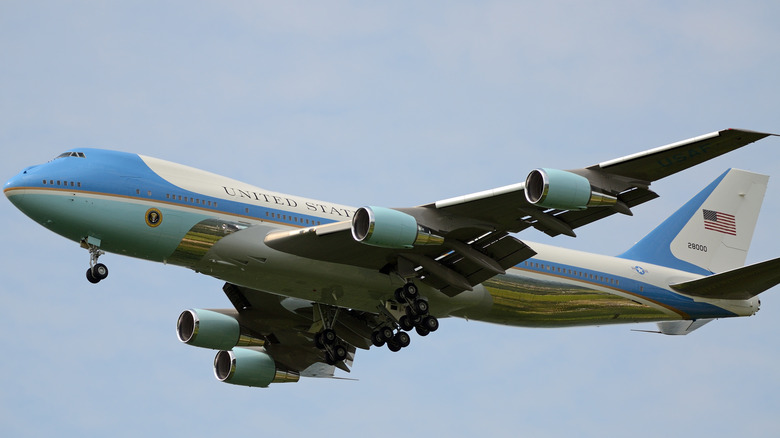Here's Why The Boeing 747 Was Discontinued
The Boeing 747 is arguably the most iconic commercial airliner ever produced. The jumbo jet has transported millions of passengers over the past 50 years. Given its popularity and iconic status, you may be surprised to learn Boeing is no longer making the 747. The company has called time on its most famous jet for a pretty obvious reason, though that reason isn't linked to any of the controversies Boeing has been embroiled in over the past few years.
The 747 was designed in the late 1960s, with the first plane delivered to PanAm in 1970. It represented a number of firsts. It was the first plane referred to as a "jumbo jet," the first commercial airliner with two aisles, and the first double-deck jet airliner. Unfortunately, the 747 is no more, with Boeing discontinuing the aircraft back in 2023. The last plane went to New York-based Atlas Air. Since 1970, 1,574 of the aircraft have been built and delivered.
As for what killed the 747? It's simply a case of decreased demand. Which is the same reason a similar large-capacity jet — the Airbus A380 — was also discontinued. Facing increasing fuel costs and with environmental concerns playing a part, carriers are instead opting for more efficient twin-engine aircraft when adding to their fleets.
Boeing was producing roughly one 747 every two months when it announced that the jet would be discontinued back in 2020. In 2022, the 747's final full year of production, only five were produced. In contrast, the company produced 70 747s when sales peaked in 1990. A replacement for the 747 is on its way in the form of the 777X, with those aircraft scheduled to be delivered from 2025.
The end hasn't exactly come yet
As things stand, Boeing won't be building any more 747s, but you're still likely to see them around for a while. The last of the humpbacked jumbo jets were delivered in early 2023. Given that commercial airliners tend to have a service life of between 20 and 30 years, there's a chance you'll still see a 747 lining up on a runway in the 2040s.
Those planes, along with the many others still in service, will need a steady supply of parts to keep them in working order. So Boeing will still be producing little bits of 747 for its aftermarket customers. Then there's the Air Force One replacement, which Boeing currently holds the contract for. The head of the United States government will still be using a 747 as his or her airborne Oval Office.
Though the current 747-200s that serve as "Air Force One" are being swapped out for a pair of 747-8s. The 747-8 is larger and more efficient than the plane it is replacing, which should meet the needs of the United States' executive going forward. Unless the demand for larger aircraft returns, the 747 is likely to remain shelved and the U.S. Government may become the owner of the last two ever built. It isn't really a bad way to bow out, but aviation enthusiasts are still likely to mourn the loss of one of the most iconic jets ever to take to the skies.

